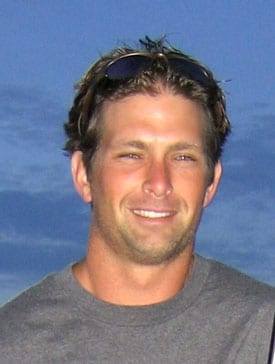
DReedSt
The Laser is the only boat I’ve ever owned, so I admit that my declaration in this issue-that it’s the pre-eminent raceboat of our time-is completely biased. You might feel otherwise, and I encourage you to write us and tell us why, but the incredible number of these boats built over the past 37 years-nearly 190,000-and the number of people who have been introduced to high-performance sailing because of it can’t be refuted. Now available with three different sails for one boat, the Laser accommodates a broader range of sailors than any other singlehanded dinghy. Wee juniors, gray-bearded masters, Olympians, and hordes of weekend warriors can either race it or tear around their lake or bay with an ear-to-ear grin.But for all its superlative stats, the popularity of the Laser boils down to its one true trait: it’s the purest high-performance one-design ever created: a forgiving planing hull, an easily adjustable sail, and the absolute equality of the equipment. Winning comes not from the boat, but from how well you, and only you, sail it.Part of my bias also comes from the fact that the Laser has two deep-rooted connections with this magazine that you may not know about. Its designer, Bruce Kirby, once filled this space as the editor-in-chief of our predecessors One-Design & Offshore Yachtsman and later Yacht Racing. And it was Kirby, too, who along with builder Ian Bruce and sailmaker Hans Fogh introduced this little creation to the world at the inaugural America’s Teacup, a one-of-a-kind “trials” event in 1970 put on by the magazine and staged on Lake Geneva, Wisconsin.The Teacup, which conveniently established its headquarters at the Wisconsin Playboy Club, came at a time in the late 1960s when there was a proliferation of small beach boats and high-performance dinghies. It showcased 49 “funboats,” scored separately in seven different categories that ranged from multihulls to “boardboats,” which included the Windsurfer, and canoes. The entry stipulation was the boat had to cost less than $1,200. There was a LeMans race to see how fast each could be rigged and launched, a capsize race to time how quickly each could be righted, a slalom race, and of course, two buoy races.The “planning centerboarders” division consisted of eight boats, of which Kirby’s prototype Weekender-as it was called at the time-was one. The letters TGIF, in large, block lettering, ran across the top of the sail. As Kirby reported from the event in a December 1970 article in ODOY, the trials started with the LeMans race. With rigs lying on the deck, at the sound of a horn the boats had to be rigged, launched, and sailed to a finish line 25 yards offshore. Fogh, who was skippering the boat for the event, logged a time of 1:45. In subsequent races, the Weekender was at or near the top of the fleet, but tussling with the Banshee, a 13-footer that was essentially a modified Flying Junior. The two boats tied in the capsize race (10.5 seconds), and each won a buoy race. The Banshee, which has long since faded into obscurity, got the better of the Weekender in the slalom, and the two finished the trials tied on points. Recalling the Teacup when putting this issue together made me wonder what might have happened had Kirby’s Weekender not had such an auspicious arrival. What would dinghy sailing, and the sport for that matter, be today had the Laser never come to be? I put the question to Kirby himself, who pondered it, but couldn’t come up with an answer. Apparently I’m not the only one who couldn’t imagine life without the Laser.









